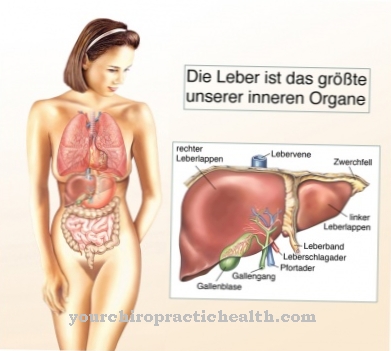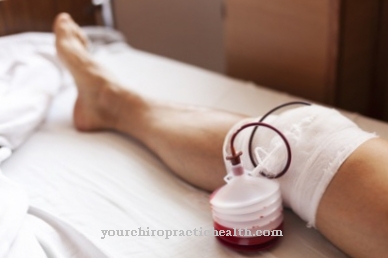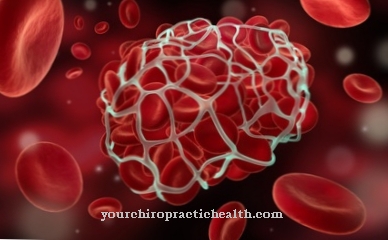The Desensitization is a therapy that tries to contain the effects of allergic diseases. During desensitization, small amounts of allergenic substances are introduced into the organism. The aim of the treatment is to get used to the allergenic substances and to avoid the excessive reactions of the immune system.
What is desensitization?

The desensitization is also called Allergy vaccination designated. With desensitization, conventional medicine today offers the only therapy that aims to treat the cause of allergies. The name is made up of the Greek prefix “hypo”, which in this context has the meaning of “weaken” and the Latin term “sensus” for sensation. This describes what the therapy should achieve.
The body's immune system gets used to allergenic substances such as pollen or house dust mites through repeated and steadily increasing doses. The immune system should no longer perceive the substances as a threat. It learns to classify contact with these allergenic substances as completely normal. For the patient, this training of the own immune system is intended to ensure that the agonizing symptoms of the allergy such as itchy skin, persistent runny nose, reddened eyes and irritated mucous membranes of the airways improve or even disappear completely after the hypodesensitization has been completed.
Another goal is to use desensitization to prevent further allergies. In the case of hay fever, the dreaded “change of floor” should be avoided with the therapy. This is an expansion of allergic respiratory reactions to asthmatic complaints.
Function, effect & goals
More and more people in industrialized countries are suffering from allergic reactions. The reasons for the increase in patient numbers are not known. There has been some suggestion that childhood in an overly sterile environment can increase the potential for allergies. Research has shown that children who grow up on farms are significantly less likely to struggle with hay fever than city children. The contact with different animals and with nature on a farm is probably a particularly good training for the immune system.
Grass and bee pollen swirl around everywhere during the growing season. Nobody can completely avoid them. House dust mites and mold are other substances that can be found everywhere in our environment. If they do not occur in a particularly high concentration, they do not pose a threat to our immune system. Nevertheless, more and more people suffer from excessive reactions to these substances.
Usually it is an allergic reaction of the immediate type caused by the substances mentioned. But also food, animal hair and other actually harmless substances that surround us can cause health problems. Today there are drugs that are supposed to dampen the immune response. However, the drugs cannot change the cause of the problem.
Before a desensitization, the attending physician carries out an allergy test in which the reactions to various allergenic substances are tested. Then it is determined which substances the hypodesensitization should cover. Most of the time, the allergens are injected in tiny amounts. That is why it is also referred to as subcutaneous immunotherapy.
In recent years, new methods have been developed in which the allergens can be taken as drops or tablets. However, there is not yet as extensive experience of the effects of this form of desensitization as with syringe therapy. The treatment extends over several years, during which the immune system is repeatedly brought into contact with allergens. Desensitization as immune training is recommended if the allergic symptoms severely affect the patient's quality of life or if there is a threat of worsening towards asthma.
Desensitization is not equally suitable for all patients. There are exclusion criteria that speak against the allergy vaccination. Anyone who gets involved in a desensitization must plan a lot of time for the numerous treatment appointments. After the injection, you should spend some time in the practice so that you can check whether there are violent reactions to contact with the allergen, which must be treated in an emergency. In the case of people who suffer from other illnesses and who regularly take medication, the decision to desensitize must be carefully considered.
The therapy must not be carried out in the case of cardiovascular diseases, hyperthyroidism, rheumatic diseases, immune deficiencies and other serious chronic diseases. Desensitization has proven to be most successful in relieving hay fever symptoms. In the case of excessive reactions to mold or cat hair, the efficiency of the therapy has not yet been sufficiently proven.
Risks, side effects & dangers
Desensitization harbors the risk that unforeseen allergic reactions or even allergic shock can develop during therapy. Most of the time, however, the immune system's response is limited to the fact that the puncture site from the syringe needle turns red, that the skin itches or swells slightly.
Other side effects of the therapy can be problems in the gastrointestinal area or abnormal sensations in the oral mucosa. The length of treatment and the side effects are a reason for many patients to discontinue therapy prematurely. Years of therapy are considered to have been successful if the symptoms on contact with allergens are weaker or have completely disappeared. In practice, however, it has been shown that in some patients the symptoms can worsen again after a while.
There are now also immunotherapies that can be completed in a few weeks or days. In this case, however, the risk of an allergic shock is considerably greater than if you have become accustomed to the allergens over a period of years. The success rate of the rapid procedure is currently still highly controversial in specialist circles.









.jpg)



.jpg)



.jpg)







.jpg)


